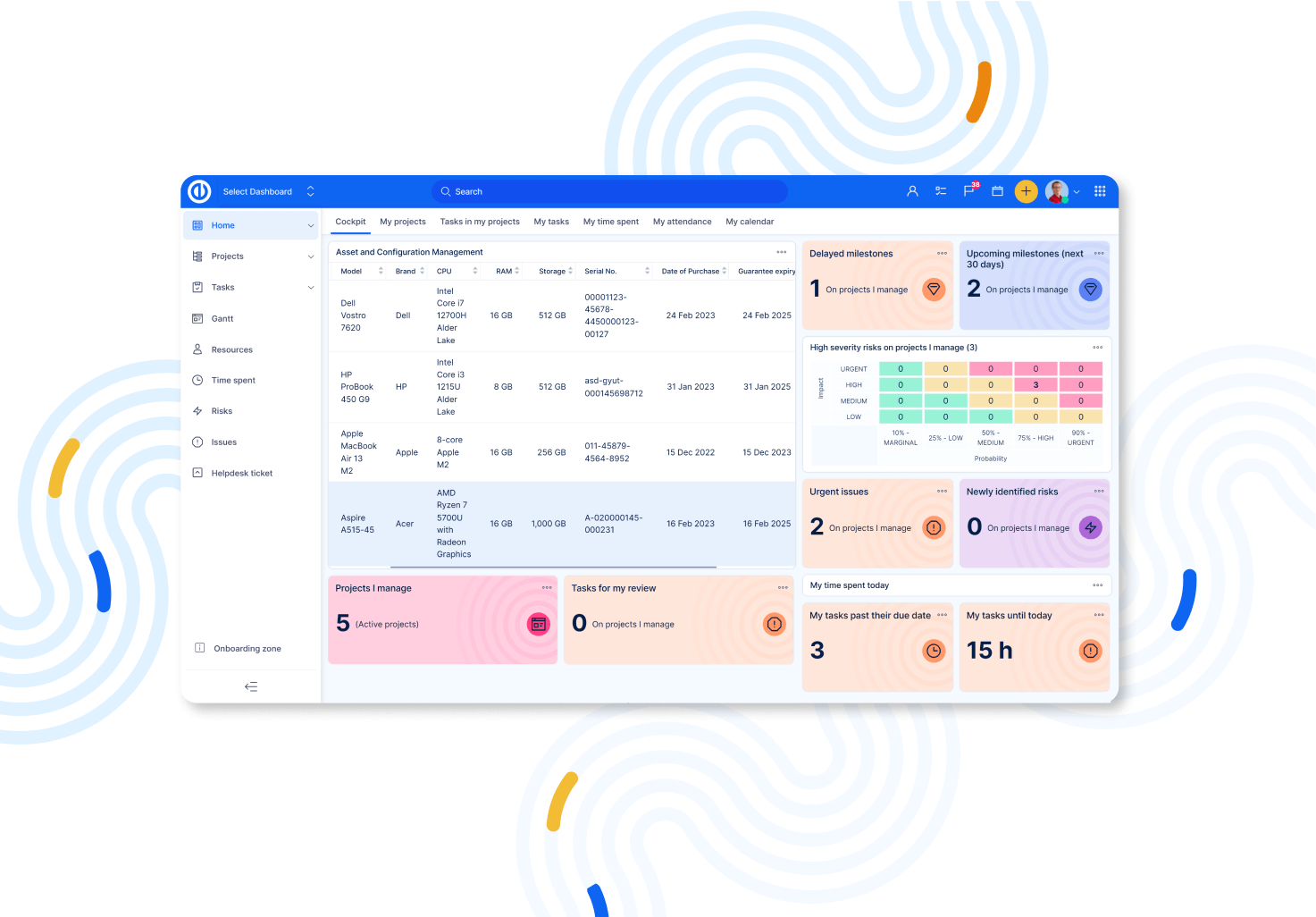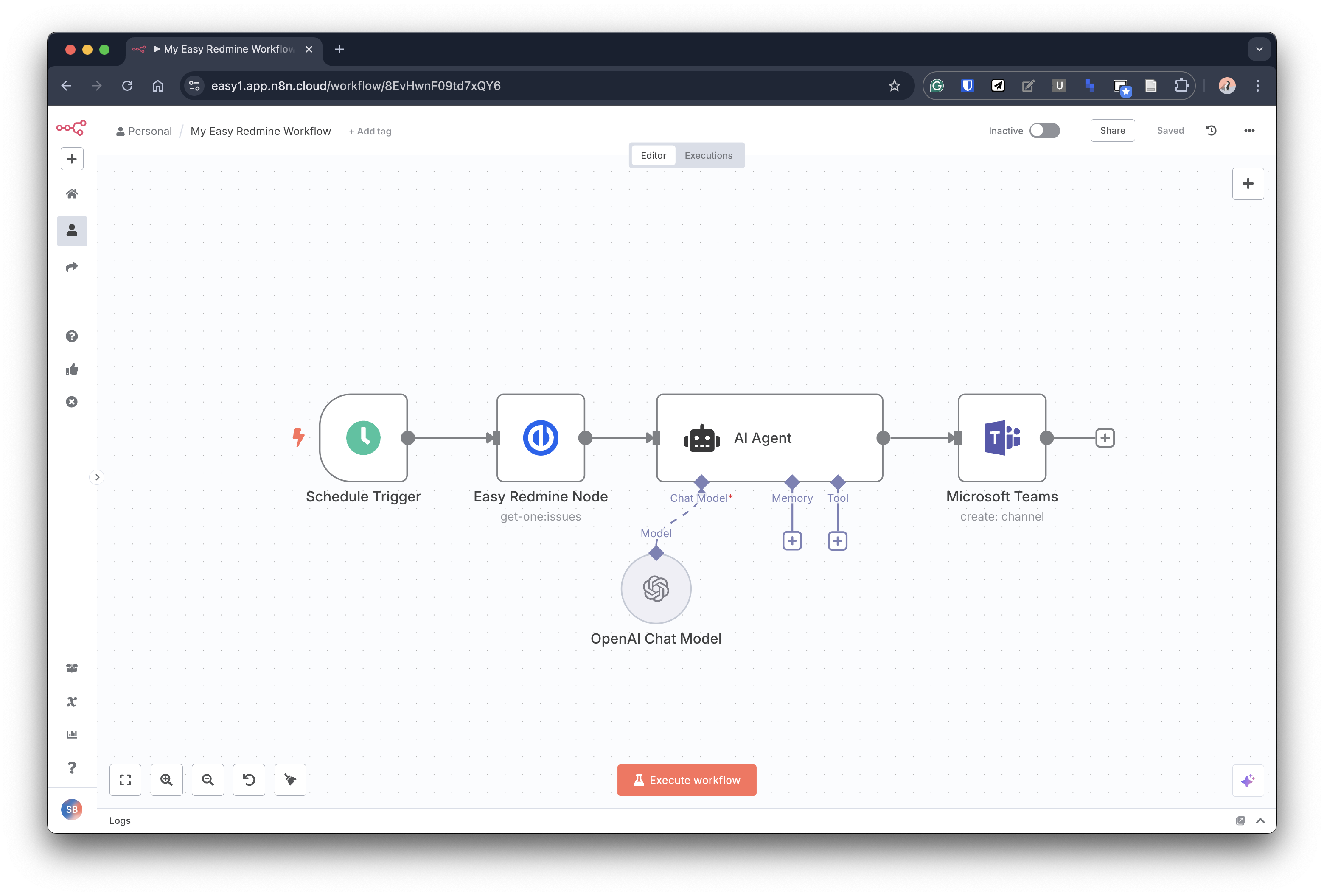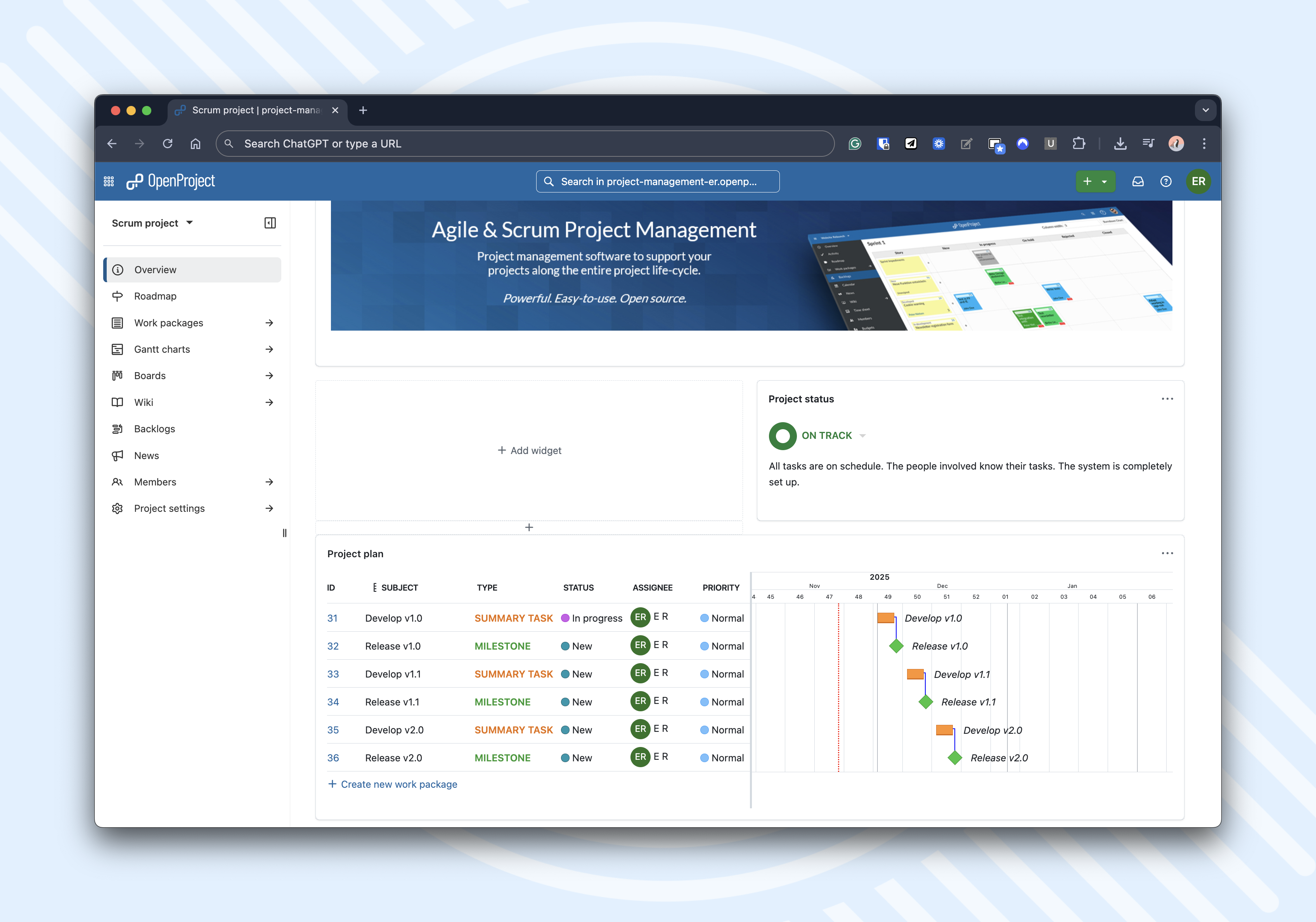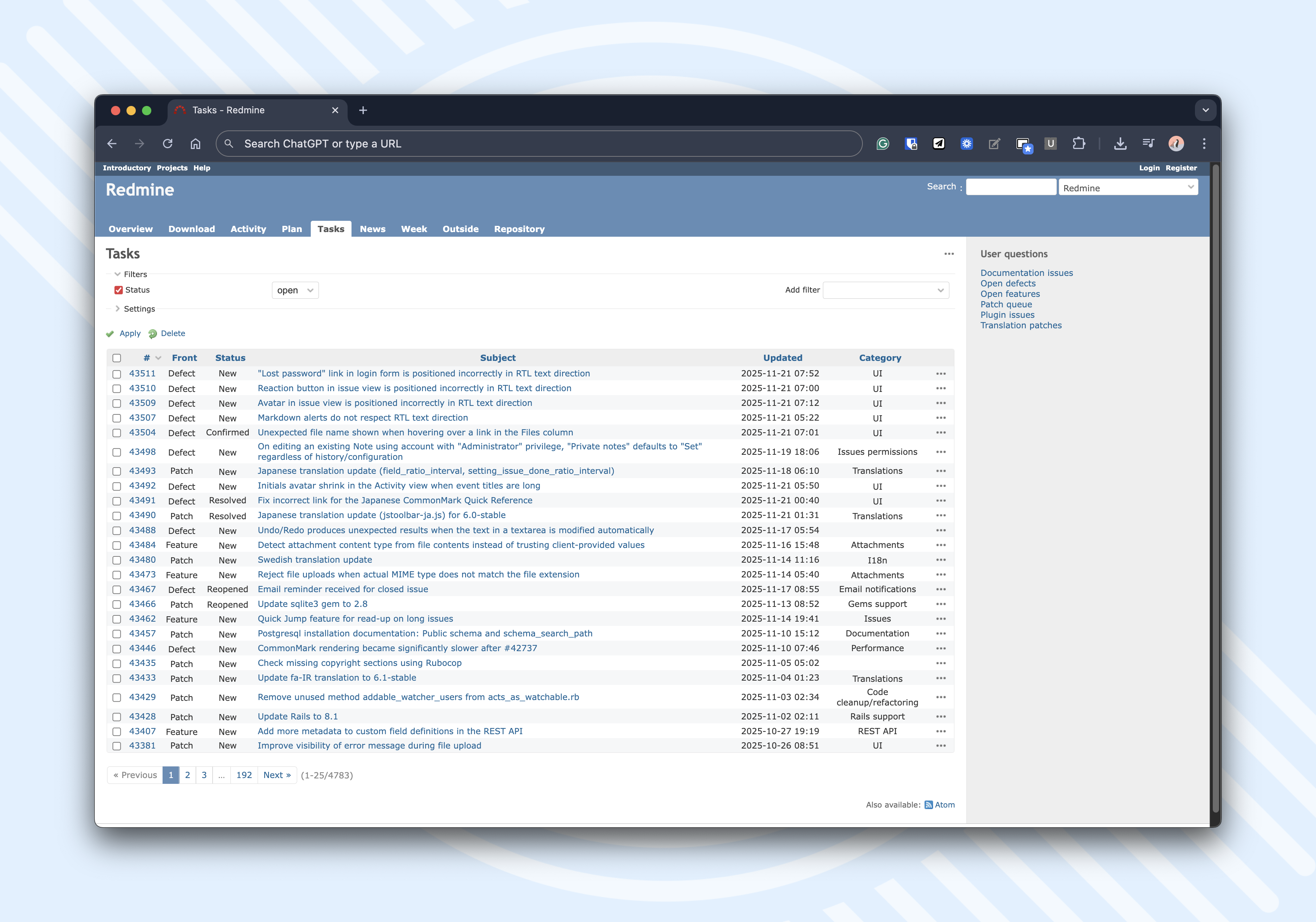Top 5 open source Jira alternatives
Jira’s rising costs, forced cloud shift, and clunky performance are pushing more teams to ask a simple question: isn’t there a better way to run projects? In this guide, we’ll walk through five open-source Jira alternatives that give you predictable pricing, on-premises options, and the flexibility to model complex workflows.

Table of contents
Common Jira hurdles
5 open source alternatives to Jira
1. Easy Redmine
2. GitLab
3. OpenProject
4. Redmine
5. Tuleap
Jira migration: Piece of cake?
Ready for your Jira open source alternative?
TL;DR
Rising Jira costs, cloud lock-in, and complexity are driving teams to open-source alternatives like Easy Redmine, GitLab, OpenProject, Redmine, and Tuleap.
Common Jira hurdles
The main reasons Jira users search for alternatives typically include cost concerns, complexity, and performance issues:
- Forced cloud migration after Data Center EOL: Jira’s push away from on-premises options is forcing many organisations into costly, less flexible cloud setups.
- Unpredictable pricing model: Rising user fees, forced upgrades, and expensive plugins make Jira’s long-term costs hard to justify—especially for larger teams. Moreover, Jira often requires reliance on plugins and third-party integrations for critical features like advanced reporting, resource management, and financial tracking, adding complexity and expense.
- Rigid licensing for different user types: Jira’s all-or-nothing licensing means even occasional users like clients or consultants need full licenses, making it cost-prohibitive for collaborative teams.
- Poor fit for complex enterprises: Large companies struggle with Jira’s limitations in workflow modelling, permissions, and admin overhead, which adds to operational costs.
- Steep learning curve: Complex customization options, which can hinder user adoption and workflow adaptation.
- Sluggish performance: Reported by Jira users on large projects and limited mobile functionality.
5 open source alternatives to Jira
Considering that Jira is going to end of life for Data Center, and given previous data breaches, you might be looking for a better solution that would "cure" or at least eliminate the mentioned obstacles.
If you want to compare the mentioned open source Jira alternatives, see the clear table with the most used features in project management software.
Common Jira alternatives that companies migrate to include:
1. Easy Redmine
Easy Redmine is a commercially supported, extended distribution of Redmine that turns the open source core into a unified platform for projects, IT service management and code. It bundles classic project management, agile tools, helpdesk, finance controlling, and CRM in a single interface, so you don’t have to stitch together multiple Jira apps and Atlassian products.
Easy Redmine is essentially the self-hosted Atlassian stack alternative replacing Jira, Confluence, Bitbucket, and Service Desk in one integrated platform. Easy Redmine substitutes:
- Jira with a powerful suite for Agile, Waterfall, and hybrid project management
- Confluence with an integrated Knowledge Base for documentation and internal collaboration
- Bitbucket with built-in Source Code Management and GitLab/GitHub integrations
- Atlassian Service Desk with a native HelpDesk module, fully integrated with ITSM tools

Agile board in Easy Redmine
Easy Redmine deployment
Easy Redmine can run on-premises or in Easy Software’s cloud, and you can move between the two (including exporting data and switching from cloud to server). Its server edition includes an installable package with uncompiled source code, giving you more control than Jira’s closed SaaS.
Easy Redmine pricing
Easy Redmine pricing for self-hosted solution starts at much smaller team sizes (starting from at least 25 users) compared to Jira Data Center’s 500-user minimum, and typically 20–30% lower cost per user at scale. Because resource management, helpdesk, and other “plugin-type” functions are built in, you simply avoid a big part of Jira’s plugin marketplace cost spiral and many hidden upgrades.
Licensing for occasional / external users in Easy Redmine
Licensing is per named user under Easy’s commercial license, which is more straightforward than Jira’s tier jumps but still means true external collaborators typically need seats if they log in.
Easy Redmine: Complexity, learning curve & UI stability
Easy Redmine provides a modernized UI, dashboards and “Easy Gantt” / WBS, plus extensive documentation and webinars, which reduces the configuration burden. Because you control when to upgrade your self-hosted instance, you can test new versions in staging before rolling them out.
Performance & scalability in Easy Redmine
As a self-hosted Ruby on Rails application (for server deployments), performance is largely under your control: you decide the database, hardware and scaling strategy. In practice, Easy Redmine is used by hundreds of mid- to large-size organizations, and its architecture is proven for multi-project, multi-team setups, though very large instances still need proper sizing and tuning.
Easy Redmine: Built-in features vs plugin sprawl
A major differentiator vs Jira is that resource management, risk management, helpdesk, knowledge base and AI assistants (Easy AI) are native modules, not separate marketplace apps. So advanced reporting and financial tracking are available out-of-the-box rather than requiring a chain of third-party add-ons.

Schema of workflow automation by Easy8
Through Easy8, Easy Redmine connects to the n8n automation platform, letting non-technical users design powerful no-code workflow automations and AI agents—such as auto-syncing tasks, routing tickets across systems, or orchestrating approvals—using visual flows and ready-made templates instead of custom scripting.
And because Easy AI and Easy8 can be deployed in secure EU Sovereign Cloud or fully on-premises with open-source LLM options, enterprises get advanced AI automation with measurable results (e.g., 30 man-days saved per week and a 21% efficiency boost in one deployment).
2. GitLab
GitLab is an open-core DevOps platform that unifies Git hosting, CI/CD, issue tracking, and Agile boards in one interface. In a Gitlab vs. Bitbucket comparison, that consolidation can dramatically reduce tool sprawl versus Jira + Bitbucket + separate CI.
GitLab Deployment
GitLab is available as GitLab.com SaaS and self-managed; the Community Edition is fully open source under the MIT license and can be installed on your own servers or cloud. With self-managed GitLab, you own the data, can migrate between clouds, and can even fork or customize the CE codebase if needed.
GitLab pricing
GitLab Community Edition is free to use with unlimited users under MIT, and the commercial tiers (Premium/Ultimate) follow a more conventional seat-based model without a plugin marketplace. Because a single GitLab deployment replaces multiple tools (SCM, CI/CD, basic PM, code review, registries, some security tools), the total cost is often more predictable.
Licensing for occasional / external users in GitLab
In GitLab CE or self-managed EE, you control user accounts without separate per-app licensing; everyone from occasional stakeholders to full-time devs can be given appropriate roles. GitLab also supports custom roles and “guest” users, and certain guest-style roles (e.g., read-only) can avoid consuming paid seats in some configurations.
GitLab: Complexity, learning curve & UI stability
For dev teams, GitLab can actually simplify the toolchain: issues, epics, boards, MR discussions and pipelines all live in one consistent UI rather than across Jira, Bitbucket and Jenkins. The navigation and concepts are stable and well-documented.
Performance & scalability in GitLab
GitLab provides reference architectures up to 50,000 users and detailed scalability guidance for self-managed deployments, which shows it’s designed to handle large, enterprise-scale usage when sized correctly.
GitLab: Built-in features vs plugin sprawl
Issue tracking, Kanban/Scrum boards, epics, roadmaps, CI/CD, code review, package registries and basic security scanning are all part of GitLab itself, not separate apps.

GitLab interface
3. OpenProject
OpenProject is a fully open-source project management suite with features like Gantt charts, Agile boards, time and cost tracking, and strong support for on-premises deployments. Its self-host option gives you full data sovereignty. Its interface is more focused on classic project management plus Agile, with a stable UX and clear cost structure.
OpenProject deployment
Available as Enterprise cloud (incl. EU data-residency options) and self-hosted on-prem, with both Community and Enterprise editions open-source under GPLv3.
OpenProject pricing
Community Edition is free with full source; Enterprise pricing is transparent and seat-based, with no separate marketplace for essentials like Gantt or budgets.
Licensing for occasional / external users in OpenProject
In Community Edition, you can create unlimited users at no license cost, ideal for involving external partners or clients. Enterprise still uses seats, but task/“work package” sharing gives you ways to expose specific items to external stakeholders without them being heavy, full-time users.
OpenProject: Complexity, learning curve & UI stability:
OpenProject emphasizes a clean, consistent interface where tasks, timelines, boards and cost/time data live in one place, reducing Jira’s “too many screens” effect. Self-hosted customers decide upgrade timing, so they aren’t forced into sudden UI changes that disrupt teams.
Performance & scalability in OpenProject
Proven in large enterprises and public bodies with many projects and users, indicating it can scale when properly sized.
OpenProject: Built-in features vs plugin sprawl:
Includes Gantt, agile boards, backlogs, time tracking, cost tracking, budgets, meetings, team planner and forums as part of the core product.

OpenProject interface
4. Redmine
Redmine is a free, fully open-source project management and issue-tracking tool with core features like multiple projects, flexible workflows, Gantt charts, time tracking, and SCM integration. The trade-off is that its UI is more minimal and “old school,” but it’s stable, predictable, fast on modest hardware, and doesn’t suddenly change layouts or features on you.
Redmine deployment
Redmine is self-hosted only: you deploy it on your own infrastructure (on-prem or in your preferred cloud), so there is no vendor-controlled EOL. Its GPL license means you always have access to the source code and can fork, modify or migrate as you wish.
Redmine pricing
The core Redmine application is completely free to download and use, including for commercial work; you only pay for hosting, administration and any optional commercial plugins or themes.
Licensing for occasional / external users in Redmine
Because Redmine is under GPL and self-hosted, you can create as many internal and external user accounts as you like without paying extra seats. You can also expose issues via public projects or helpdesk-style public ticket links, letting clients follow or comment on tickets without full user accounts if you prefer.
Redmine: Complexity, learning curve & UI stability
Redmine’s UI is more traditional and less “polished” than Jira’s or OpenProject’s, but it’s logically structured around projects, issues and trackers, so many teams find the learning curve flatter than Jira’s once configured.
Performance & scalability in Redmine
Redmine is widely deployed in organizations of all sizes, and supports multiple projects, subprojects and thousands of issues, with performance determined mostly by how you size the database and application servers.
Redmine: Built-in features vs plugin sprawl
Out of the box, Redmine includes Gantt charts, calendars, per-project wikis and forums, time tracking, document and file management, and SCM integration (Git, SVN, Mercurial, etc.).

Redmine interface
5. Tuleap
Tuleap is a 100% open-source ALM platform that covers Agile planning, requirements management, DevOps, and quality management. Tuleap’s boards, backlogs, and integrated modules are designed to keep performance acceptable at scale.
Tuleap deployment
Offers self-hosted, cloud, and even air-gapped deployments; Community and Enterprise editions are open source under GPL.
Tuleap pricing
Community Edition is free; Enterprise subscriptions provide support and additional services but keep the same open code base.
Licensing for occasional / external users in Tuleap
On CE, you can add unlimited users without license costs, ideal for involving QA, business stakeholders or customers. Even with Enterprise, you can always fall back to CE on-prem if budget or licensing becomes an issue.
Tuleap: Complexity, learning curve & UI stability
Tuleap is broad in scope but provides coherent Scrum/Kanban boards, backlogs and dashboards that are designed for Agile/DevOps from day one. Upgrade timing is under your control.
Performance & scalability in Tuleap
Designed for multi-team ALM, Tuleap is used in large and regulated environments where traceability and stability at scale are required.
Tuleap: Built-in features vs plugin sprawl
Includes Agile boards, backlog and sprint planning, test management, requirements management, Git/SVN integration and dashboards out-of-the-box.
Jira migration: Piece of cake?
Switching from Jira to another tool can be challenging, particularly when dealing with extensive documentation and established workflows.
Companies considering Jira migration should conduct thorough evaluations of potential alternatives, possibly starting with small projects to assess compatibility with their needs. It's crucial to ensure that the new tool can adequately support existing processes and integrate with other systems used within the organization.
At Easy, we have rolled up our sleeves and prepared as smooth process for the Jira data migration as posible possible. And so migrating from Jira to Easy Redmine is designed to be a guided, low-risk process rather than a scary “big bang” cutover. Easy Redmine provides a dedicated Jira Importer / Migrator that handles the heavy lifting for you and is backed by case studies (e.g., Aspecta’s Jira migration story) and a recorded migration webinar showing real-life data transfer.
With the Jira Importer / Migrator, around 80% of your Jira project data is transferred automatically, so most of the migration work is done for you.
Ready for your Jira open source alternative?
Obviously, Jira users want fairer, more predictable licensing that scales with actual usage and allows for customization between full, agent, and customer user types, to manage costs and accommodate large teams or external users efficiently.
Easy Redmine, available both as a cloud service and on-premises, with access to source code, is often perceived as a more flexible, lower-cost alternative to Jira Data Center and Jira Cloud for organizations that want hybrid or on-premises options.
If you're serious about control, cost-efficiency, and flexibility, Easy Redmine is your open source Jira alternative. Switching from Jira to Easy Redmine is a safe and proven choice. Our experienced team has migrated countless Jira projects, with many satisfied clients (as you can read in this project management case study).
Contact our sales team to learn how switching from Jira to Easy Redmine can be smooth, secure, and backed by years of migration experience!



